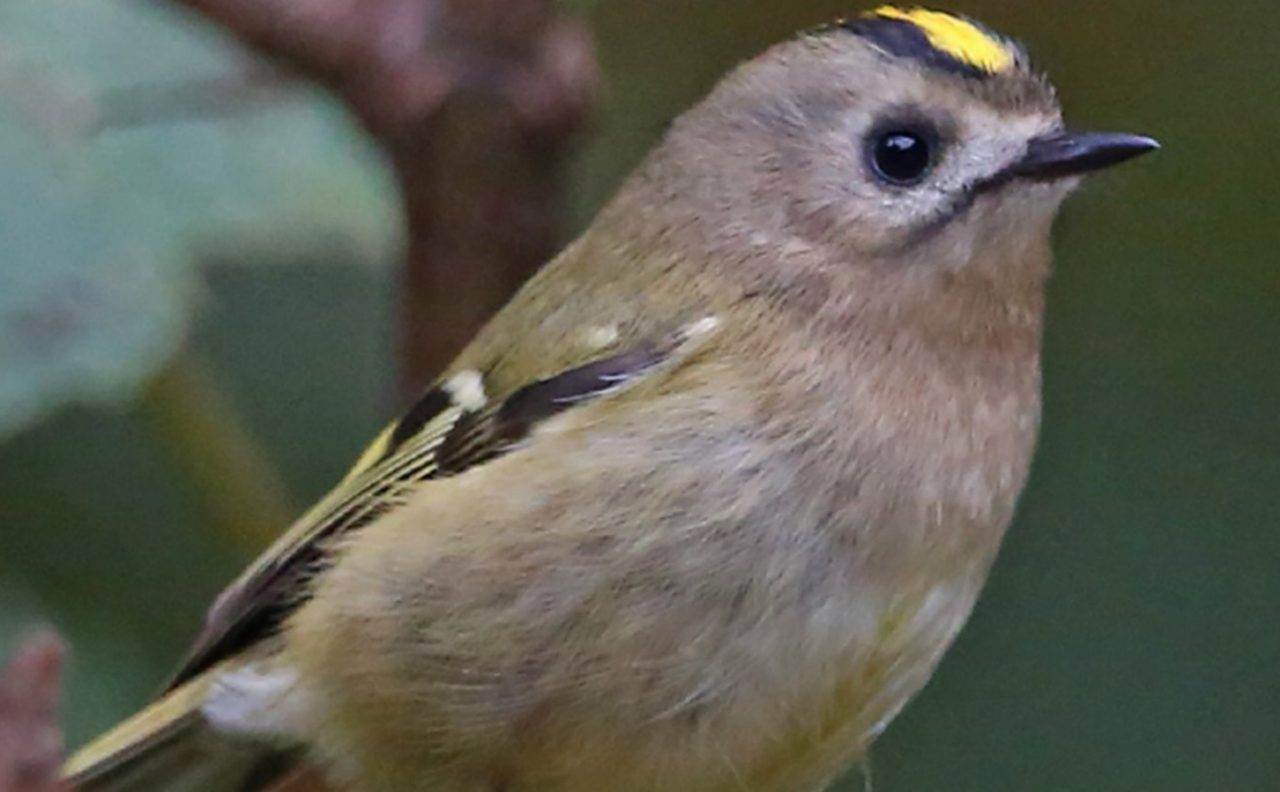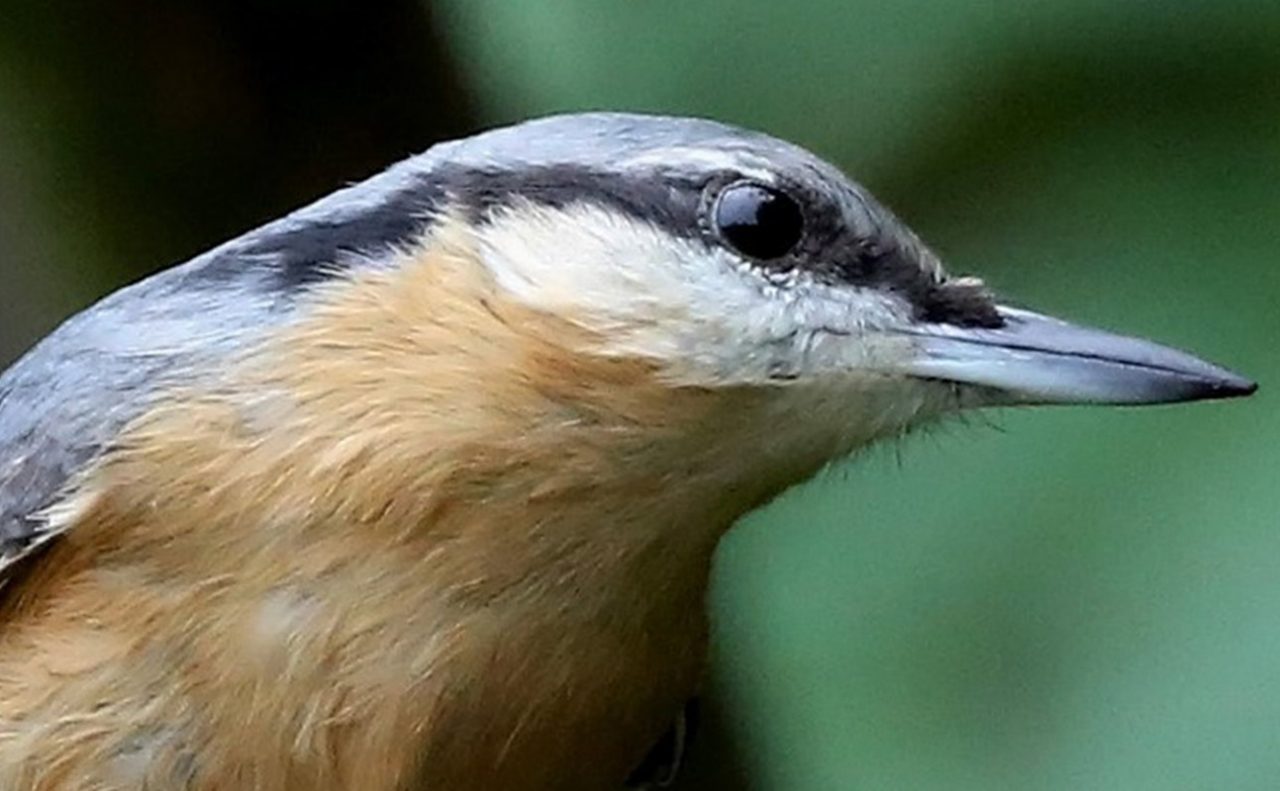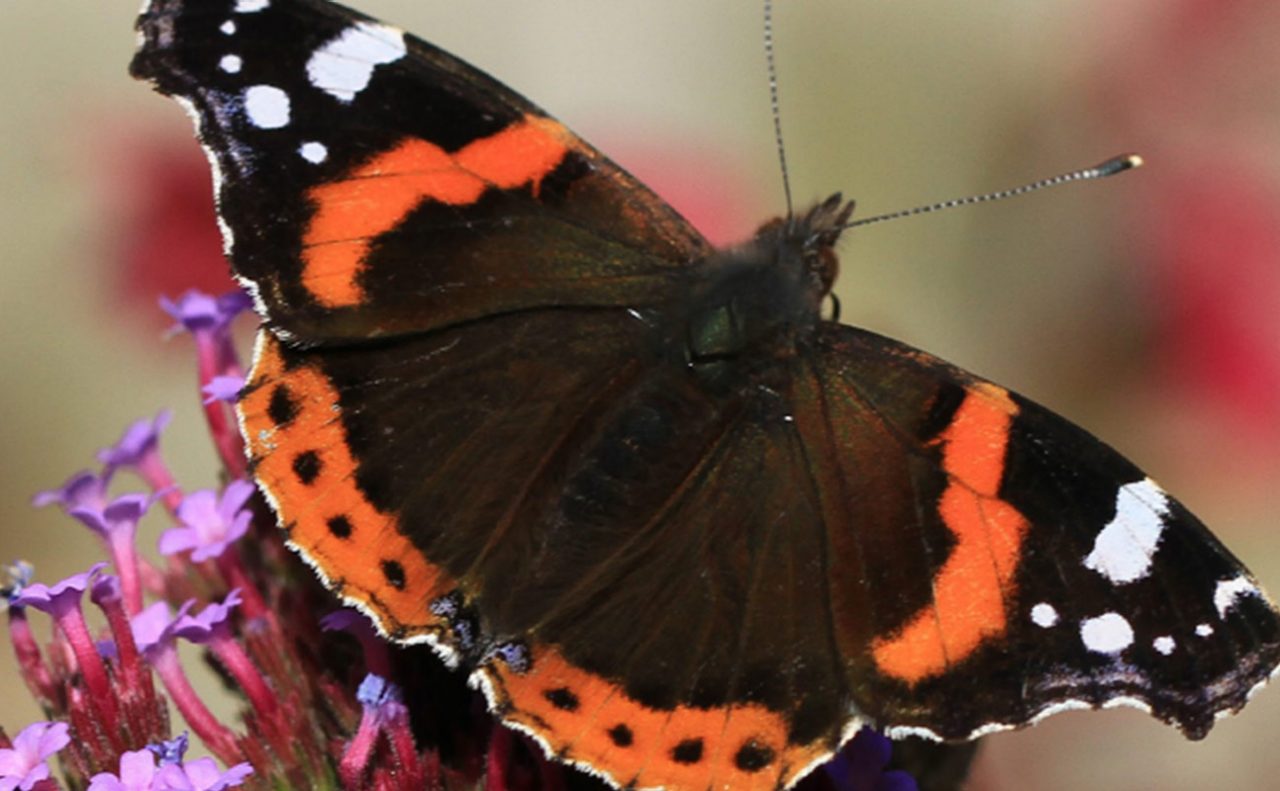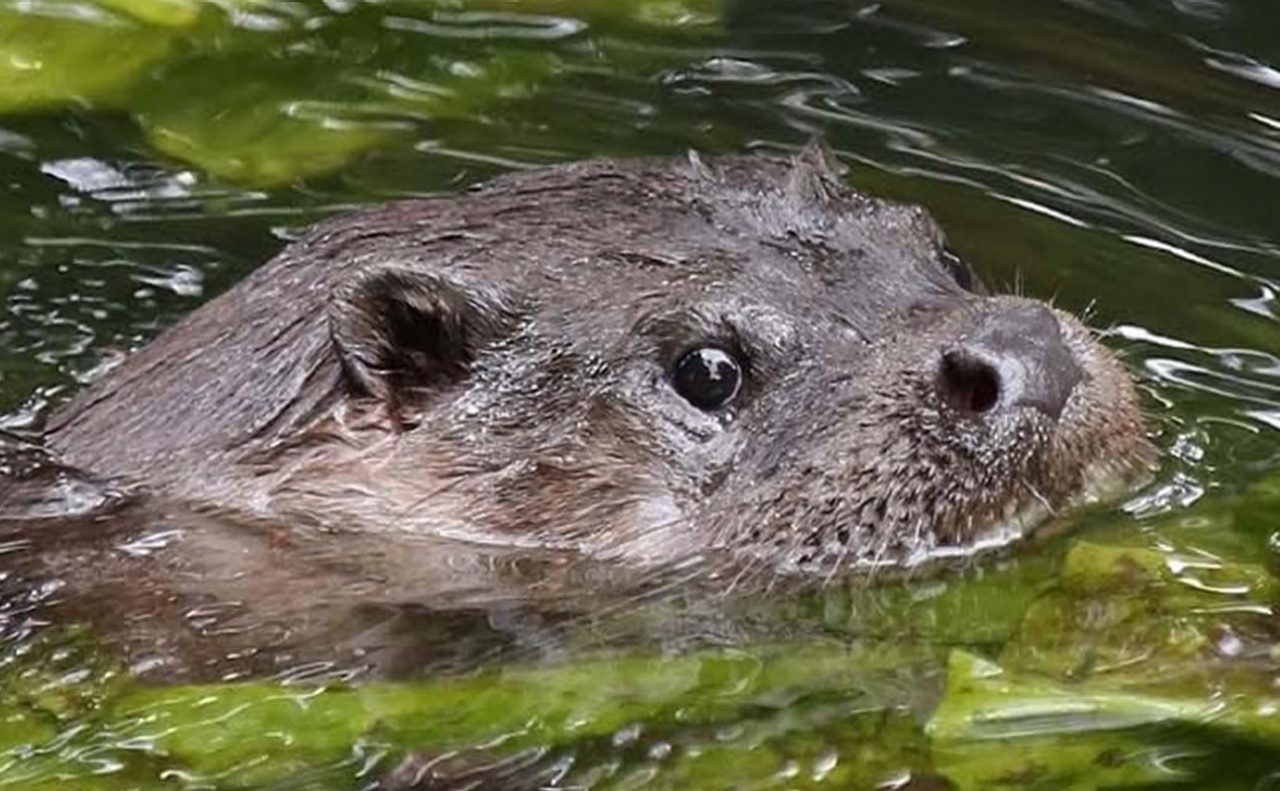nature's-alive-on-our-villages-this-winter
- Body Content
-
Our Rangers share a round-up of their sightings on village during the winter months. Find out what you could spot on each of our villages in this winter nature notebook.
Sherwood Forest nature notes
We’ve had extremely mild weather this November, up until the end of the month when we had some snow. Bramblings are showing their faces once again at the Nature Centre and on our main hide feeders and groups of Long-Tailed Tits are crowding the fat ball feeders. They are often found, this time of year, in flocks mixed in with other Tit species.
The Devil’s Fingers Fungus have emerged from their eggs again and Martin found an Alder Tongue Gall. This was once thought to be rare in the UK, but has spread quite rapidly in the last few years and is considered to be quite common now. The Gall is a strange but quite conspicuous tongue-like growth on the female catkins of an Alder tree which is a chemically induced distortion. They start green, later turning yellow, orange, red or purple and eventually turning black or brown.
The Kingfisher has been a welcomed sight on our lake behind the Forrester’s Inn. They fly low over the water and hunt fish from overhanging perches. The Kingfisher needs to hold a territory with enough food over the winter months, otherwise they have to move out if the food supply is low or the waterways freeze over. This can bring them into conflict with other Kingfisher territories.
Another great spot was the Goldcrest (pictured), the smallest bird in the UK at only 9cm in length and weighing approximately 5.5g. The fiery orange stripe along its head is its most distinguished feature. They are often spotted during the winter months as Goldcrests from Scandinavia join our Native groups. They are usually difficult to see not only because of their size but also because of their indistinct way in which they move around the trees looking for food. Listening for their high pitched shrill helps to let you know they are around.
Sara, Mike and the Grounds Team at Sherwood Forest have been carrying out some very important and much needed work down at our heathland area, focussing on the management and regeneration of our heath for next year. A specialist machine has been used to cut everything back close to ground level, getting rid of Silver Birch trees, Bracken and Brambles. The Heather itself has been cut back to help encourage healthier, new growth. The bare ground is a key habitat, within the heathland areas, providing nesting for Insects, Birds and our Reptiles. Heathland areas were once a widespread habitat but now only cover a small part of the UK and so the work carried out now is essential to help support these species.
- Sara, Mike, Martin, Rick & Lynn, Sherwood Forest Ranger Team
Elveden Forest nature notes
November was quite dry - early on the month was looking like being the driest for 45 years, and then we finished with a cold and wet snap at the end.
A Kingfisher was seen on several lakes and by the middle of the month there were 66 Tufted Ducks, a single Pochard, 100 plus Black Headed Gulls, several Common Gulls and some Shovelers on the top lake. The Tufted Ducks come every year and seem to like our lakes to over winter on. These are a member of the diving duck family and are easily seen because of the male’s crisp black and white plumage.
The Buzzard (pictured) usually seen around the front drive, is venturing further into the Village being seen in the pit below the hide. Buzzards are much more common now than when we first opened, and their numbers have increased nationally.
Winter finches are arriving with several Bramblings seen on the feeders and some large flocks of Siskins around the lakes. On the 30th a small flock of Crossbills flew over the 700s - the first seen for some time. Hopefully they will hang around as they used to be a regular sight here and are a favourite with the birdwatchers.
The 2021 nest box survey is complete with some interesting results, though not very encouraging this year. Previous year’s occupancy of boxes has been about 85% to 87%, this year was only 73% used out of the 263 boxes, 23% were not used and seven were either missing or inaccessible. The most worrying statistic was the far greater number than normal of dead young and eggs left in the boxes.
There could be various reasons such as a cold spring, food shortages on hatching, predation of adults and habitat change. Cold springs can have an effect on fertility and food shortages can happen when the normal rearing food is less abundant - such as the Oak Caterpillars that a lot of the Tit family rely on to rear their young. If there was a shortage this will show up on the national breeding survey. Some of the clutches with large dead chicks in are probably the result of predation of the adults. Where habitat change has occurred, this can contribute to several of the above, less vegetation so less foraging areas and reduction of food. Also a more open forest structure makes it easier for adults to be predated when returning to the nest boxes. This would also be dangerous for when the young fledge when they are most vulnerable. This very much highlights the challenges that our wildlife face and the many different factors that can impact them.
- Peter, Elveden Forest Conservation Ranger
Longleat Forest nature notes
The mild weather continued resulting in many trees holding on to their leaves long into November. There were wonderful displays of yellows and reds from the Maples and Sweet Chestnuts. A bitter cold spell arrived at the end of the month. Apart from the odd flurry, we avoided the snow here at Longleat but a few days later the first named storm of the season, Arwen, struck forcing the last of the leaves to relinquish their grip.
These contrasts in weather produced a variety of wildlife sightings. Red Admirals were seen as late as the 18th. These butterflies are migrants arriving in the UK to breed but unable to survive our winters. There is evidence now though that increasing numbers of adults are overwintering here in the South. These individuals don’t hibernate as such and can occasionally be seen flying on mild, sunny days right through the winter months.
Damp, mild conditions are ideal for many species of forest Fungi. Shaggy and Common ink caps were particularly abundant. Stump Puffballs, Yellow Stagshorn and Cauliflower Fungus were also noted, along with several examples of a striking bright Red Russula known as the Sickener.
Grey Squirrels continue to build their winter food stores. With most of the nuts and seeds already claimed they turn their attention to the bird feeders as they continue trying to find ways of defeating the baffles. Their dreys are always easy to spot once the leaves start to fall. Those built by this year’s youngsters tend to be flimsy, often located out in the branches. Breeding and winter dreys are larger, solid structures wedged into a fork against the main trunk.
The first Woodcock of the winter was seen at Nockatt Coppice on the 16th. Large flocks of Redwings and Fieldfares were feeding in the open field and four Roe Deer were patrolling the perimeter fence looking for a way in.
The cold weather brought a flurry of activity to the bird feeders on Village with Coal, Blue, Great and Long Tailed Tits all feeding hungrily. Nuthatches (pictured), Siskins and Chaffinches were also present while Blackbirds, Robins, Dunnock and Woodpigeons foraged below. Other birds seen this month were both Great Spotted and Green Woodpeckers, Grey Wagtail, Treecreeper, Jay and Raven.
- Steve, Longleat Forest Senior Conservation Ranger
Whinfell Forest nature notes
From time to time, forests experience what are known as natural disturbances, and recently Storm Arwen made its presence felt at Whinfell. The Rangers worked hard to deal with windthrown trees, and although a challenge in terms of forestry operations, these events are a part of every forest’s life cycle.
Whinfell is predominantly Scots Pine, one of Britain’s 3 native conifers and a species known to require relatively high light levels in order regenerate and produce offspring that will, over time, form the new canopy. Windthrow allows light to reach previously shaded areas of the forest floor, signalling the opportunity for young Scots Pine to begin to grow to maturity. Thankfully however, none of the Red Squirrel feeder trees or dreys were damaged, and life within the forest has since returned to normality, with the Reds emerging as industrious and mischievous as ever.
Fallen and standing deadwood provides home to countless organisms, such as Lichens and Mosses which Whinfell is particularly rich in, species such as the Hair-Cap Moss that resembles a miniature Pine tree, and also specialist Fungi such as the Yellow Stag Horn which can still currently be seen around old stumps.
A current resident that uses standing deadwood as a home is the Greater Spotted Woodpecker (pictured). With white cheeks, black lines, red patch on the back of the head (for males), red rump and black wings with white spots they are truly unique looking amongst Whinfell’s birds. Males use standing dead trees to drum against to proclaim territorial ownership, and nesting cavities are excavated where females lay eggs. Its tongue extends up to 4cm beyond its beak to allow it to collect grubs and larvae from crevices, and is so long it has to be curled up in a sheath from the rear of the beak, up over the back of the skull. A truly fascinating bird.
A slightly more inconspicuous resident has been sighted a number of times recently. Often living in holes in trees, or in dens taken over from prey, the Stoat is both beautiful and deadly. Although only relatively small, it is a formidable predator. It will take rodents such as Voles and Mice but its favourite prey is Rabbit, even though often up to 5 times its size. Identifiable by its chestnut brown fur and creamy underbelly, sightings are often little more than a blur due to its stealth and speed.
- Ric, Whinfell Forest Senior Conservation Ranger
Woburn Forest nature notes
Thinking towards the warmer days of spring and the beginning of the bird nesting season, we’ve begun to create Stump Nesting Boxes to supplement the variety of nesting sites already available. These are nesting boxes created from the remaining trunk of existing trees that have been cut down. Creating the nesting cavity within the trunk, requires some careful work by someone highly skilled with a chainsaw. Marsh Tits, Coal Tits and some of the Warbler family like to nest low to the ground, often using tree stumps as their chosen nesting sites. We are already excited in anticipation!
Although we have drawn down the curtain on butterfly spotting for the year, this month saw us laying wildflower turf in three locations. Many species of butterfly are sadly in decline, and this is a continuing concern. However, we can do a number of things to help, including planting their favourite food plants. Hopefully these nectar rich flowers will give us the pleasure of watching more butterflies this summer and provide a supplement to what is already available. Of course, the caterpillars need food too and our more common Butterflies such as the Meadow Brown, Ringlet and Gatekeeper feed on grasses, Ragwort and Bramble. The Red Admiral (pictured) and Peacock Butterfly caterpillars feed on nettles and the caterpillar of the Painted Lady prefer thistles, which is why we ensure that these foodstuffs, although not nearly so pretty as the wildflowers, are readily available throughout the forest too.
We have also been focusing on our ponds this month, removing the non-native Goldfish from our pond outside the Subtropical Swimming Paradise and re-homing them in a more suitable environment where they are not a threat to our native wildlife. Many people are unaware that it is an offence to release or allow to escape into the wild, any non-native species but even something as seemingly insignificant as a Goldfish can have a devastating effect on the health of a pond.
Looking forward to the year to come!
- Alex & Lucie, Woburn Forest Conservation Team
Longford Forest nature notes
November brought a mild and dry start for the winter which was appreciated by all involved in the final preparations for Winter Wonderland. We also have had two new guests arrive in Longford Forest. The first is a Eurasian Otter (pictured) which was first spotted and photographed by the keen eyed Daragh Feighery, our Village Director and now can be seen on a regular basis swimming in the lake and floating on its back enjoying the catch of the day!
The Eurasian Otter ranges from western Europe, east through Asia and on to China and Japan. Until recently, the Otter was in decline everywhere in their traditional home ranges except in Ireland where the densest population exist. Ireland is considered to have one of the healthiest Otter populations in Europe. The species, already extinct over much of its former range, is listed as “vulnerable to extinction” by the IUCN (International Union for the Conservation of Nature) and is listed as Near Threatened under the Endangered Species Act and the Marine Mammal Protection Act. The thriving Irish Otter population is of international importance in terms of Otter conservation. The practice of hunting and trapping is now banned but the destruction of their habitats, human disturbance and falling water quality levels are a threat to the Irish Otter population.
Cubs are fully furred when born and first open their eyes after five weeks. The mother Otter will nurse the cubs for up to fifteen weeks by which time they will have become able swimmers. They have been known to stay with their mothers for up to one year and can be seen in family parties learning hunting techniques. The diet of an otter comprises of fish, eels, salmonids, waterbirds, amphibians, and crustaceans. Mortality rates are low if the cubs are born in the summer, and they can expect to live for up to 5 years on average in the wild in Ireland.
There have also been plenty of sightings of the Devil’s Coach Horse which is a common Beetle and can often be found underneath rocks and moss. The Devils Coach Horse or the Dearg-a-Daol as it once was referred to is a member of the Rove Beetle family - one of the most diverse families of animals on the planet with at least 46,000 species described so far. These beetles can often shock guests as they are regularly seen curling up their abdomens like the tail of a scorpion when threatened and emit a foul-smelling substance. Although not dangerous, it’s best to keep a safe distance!
- Noel, Longford Forest Conservation Ranger
*Photograph's taken by Margaret Holland.







